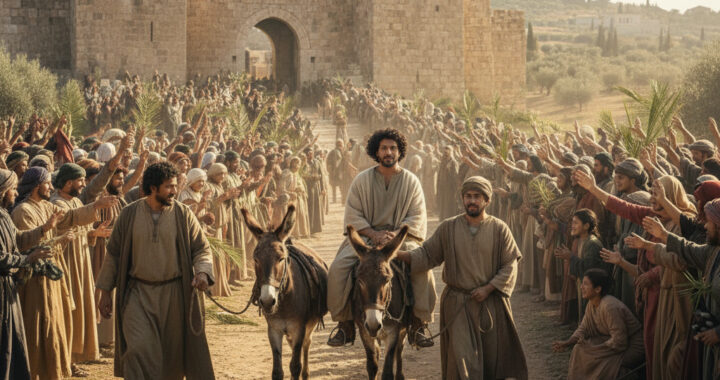Introduction
Traditionally, those who claimed to be Christians professed to believe in the bodily resurrection of Jesus Christ and in the bodily resurrection of all who die. The Apostles Creed states, “I believe in Jesus Christ, He suffered under Pontius Pilate, was crucified, died, and was buried. On the third day he rose again.” This Creed further states, ” I believe in the resurrection of the body.” However, higher criticism has caused many to doubt or deny the bodily character of the resurrection, and even among those who are considered to be evangelical opinions differ concerning the meaning of “I believe in the resurrection of the body.” Norman Geisler’s book, The Battle for the Resurrection, and Murray J. Harris’ response, a book entitled From Grave to Glory, detail the thinking behind these differing opinions. It is not the purpose of this article to take sides for or against anyone. Instead, the purpose of this article is to examine verses in 1 Corinthians 15 so that our understanding of the resurrection—both Christ’s and ours—may be informed by God’s Word.
Christ’s Resurrection
In 1 Corinthians 15:1–34, the resurrection of our Lord Jesus Christ is discussed. I have divided this section into three major parts:
A. In verses 1–11, the integrity of Christ’s resurrection is presented. “The Gospel” refers to the official message proclaimed by Paul as an apostle of Jesus Christ. It was preached by Paul to the Corinthians, received by them, and in which they stood and were still standing (v. 1). The Gospel was that message by which the Corinthians were being saved, since they were keeping in memory (or holding fast) the message Paul gave when he evangelized them (v. 2).
The content of Paul’s Gospel is clearly seen in verses three and four: “Christ died for our sins according to the scriptures” (v. 3) and “he rose again the third day according to the scriptures” (v. 4). Christ’s burial is not a major point in the Gospel’s content but serves to support the reality of Christ’s death, just as the fact of His being seen by people after His resurrection is not another major point in the Gospel but supports the truth of His resurrection. “Christ died” tells us the Gospel is historical (as does “and he rose again the third day”); “for our sins” tells us the Gospel is personal; “according to the scriptures” (a phrase attached to both statements: “Christ died for our sins” and ” he rose again the third day”) tells us the Gospel is authoritative, i.e., this message comes from God. Verses five through eleven state that Jesus Christ appeared at least six times after His death and burial. These appearances support the historical reality of His bodily resurrection.
B. The second major point Paul makes in 1 Corinthians 15:1–34 concerns the importance of Christ’s resurrection (verses 12–19). Notice that Paul connects the idea of a future resurrection of the dead with Christ’s resurrection: If the resurrection of Christ is preached as being true and necessary for our salvation, how can some say there will be no resurrection? (v. 12). These two truths stand or fall together (v. 13), and if Jesus Christ has not been raised from the dead, Paul’s preached message is empty, the faith of the Corinthians was empty and Paul was a liar because he claimed to see the risen Christ (vv.14, 15). Furthermore, if Jesus Christ was not raised from the dead, the Corinthians were still in their sins, believers who have died no longer exist and living believers are worthy of pity (vv.17–19).
C. The third major point Paul makes in 1 Corinthians 15:1–34 involves the instruction concerning Christ’s resurrection (verses 20–34). This instruction includes the following facts: Christ has been raised from the dead and is the first installment of those who have fallen asleep (vv. 20–22); there will be an order of resurrection, including Christ’s own resurrection, then the resurrection of believers at His coming, then the resurrection of unbelievers at the end of His earthly kingdom (vv. 23–28); and believing with certainty in a future resurrection produces godly living, whereas uncertainty about a future resurrection leads to a life characterized by selfishness and failure to witness for Christ (vv. 30–34).
Our Resurrection
Now Paul turns his attention from Christ’s resurrection to our resurrection and this occupies his thinking throughout the rest of the chapter (verses 34–58). This section also is easily divided into three parts:
A. In verses 35–41, comparisons are made concerning our resurrection in order to emphasize the fact that our resurrection involves the restoration and transformation of our present bodies. Our resurrection is compared to a sown seed producing a grown plant (vv. 35–38). Notice that the grown plant IS that seed which was sown, yet its appearance has been radically transformed. God’s Word tells us when Jesus Christ returns for us, He will “change our vile (= humble) body, that it may be fashioned like unto his glorious body” (Philippians 3:21). Our resurrection is also compared to earthly and heavenly bodies (vv. 39–41). The point seems to be that while we use the word “body” to men different things (e.g. we say sun, moon, and stars are heavenly bodies while we also speak of humans and animals having bodies ), nevertheless, we still are talking about a body.
B. In verses 42-50, contrasts are made between our body in its present form and our body in its resurrected form: our body in its present form is described as perishable (= sown in corruption), lowly (= sown in dishonour), weak, soulish (= natural) and earthly, while our body in its resurrected form is described as imperishable, possessing glory, possessing power, spiritual and heavenly.
Comments concerning two to these contrasts are necessary. First, when Paul describes our resurrected body as “spiritual” (v. 44), he does not mean a body composed of spirit (which is a contradiction of terms, in light of Luke 24:37–39). Concerning “natural” and “spiritual”, Gordon Fee (The First Epistle to the Corinthians, Grand rapids: Wm. B. Eerdmans Publishing Co., 1987, p.786) states: “These are the same two adjectives used in 2:14 to describe the basic differences between believer and unbeliever. In this case, therefore, as the next analogy (vv. 45–49) will make clear, they do not describe the “stuff” or composition of the body; Rather, they describe the one body in terms of its essential characteristics as earthly, on the one hand, and therefore belonging to the life of the present age, and as heavenly, on the other, and therefore belonging to the life of the Spirit in the age to come.”
Second, some have misunderstood the meaning of Paul’s words, “flesh and blood cannot inherit the kingdom of God ” (v. 50). J.A. Schlep, in his book The Nature of the Resurrection Body (Grand Rapids: Wm.B.Eerdmans Publishing Co., 1964), pp. 201, 202 offers some helpful remarks: “The expression ‘flesh and blood’ occurs in four other passages in the New Testament, viz. Matthew 16:17, Galatians 1:16, Ephesians 6:12, and Hebrews 2:14. In all the passages just mentioned, it is obvious from the context that ‘flesh and blood’ does not denote the substance of the human body. On the contrary, here again the whole man is meant particularly in his frailty and perishableness, as appears from the fact that the verb in Greek is in the singular and in the parallel clause (50b) the word ‘corruption’ is used for ‘flesh and blood’.”
C. In verses 51-58, comfort is offered in light of resurrection: Not all believers will die but all will be transformed from a perishable conditioned which is subject to death to a condition which is not subject to decay or death (vv. 51-55); we do not fear death since the death and resurrection of Jesus Christ has taken away our sins and guarantees our resurrection (vv. 56, 57), therefore we are encouraged to faithfully serve the Lord (v. 58).

Dr. Myron J. Houghton
Myron Houghton (Ph.D., Th.D.) began his ministry in 1971 at Denver Baptist Bible College as head of the Theology Department and joined the faculty at Faith Baptist Bible College and Theological Seminary in 1983 when the two schools merged. He retired from FBTS in May 2019 after nearly 50 years of teaching.
Dr. Houghton was promoted to Heaven on July 13, 2020, leaving a legacy of service and faithfulness to the thousands of men and women who he impacted during his ministry.

